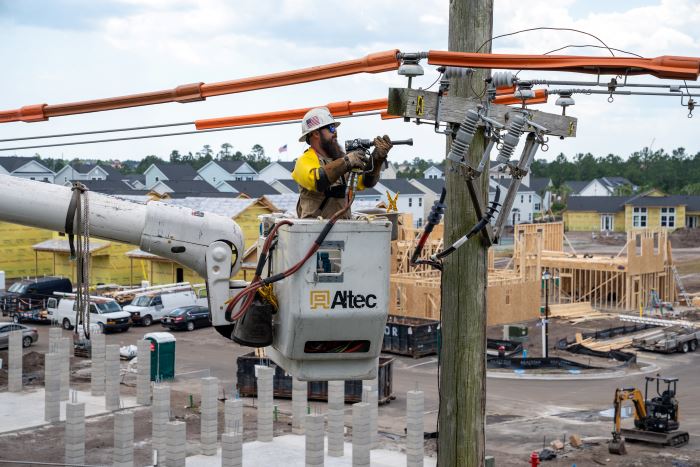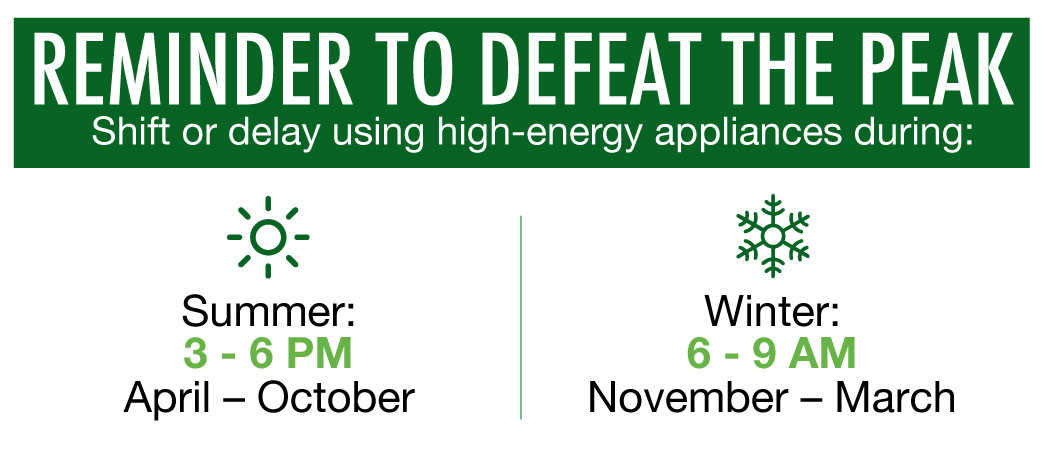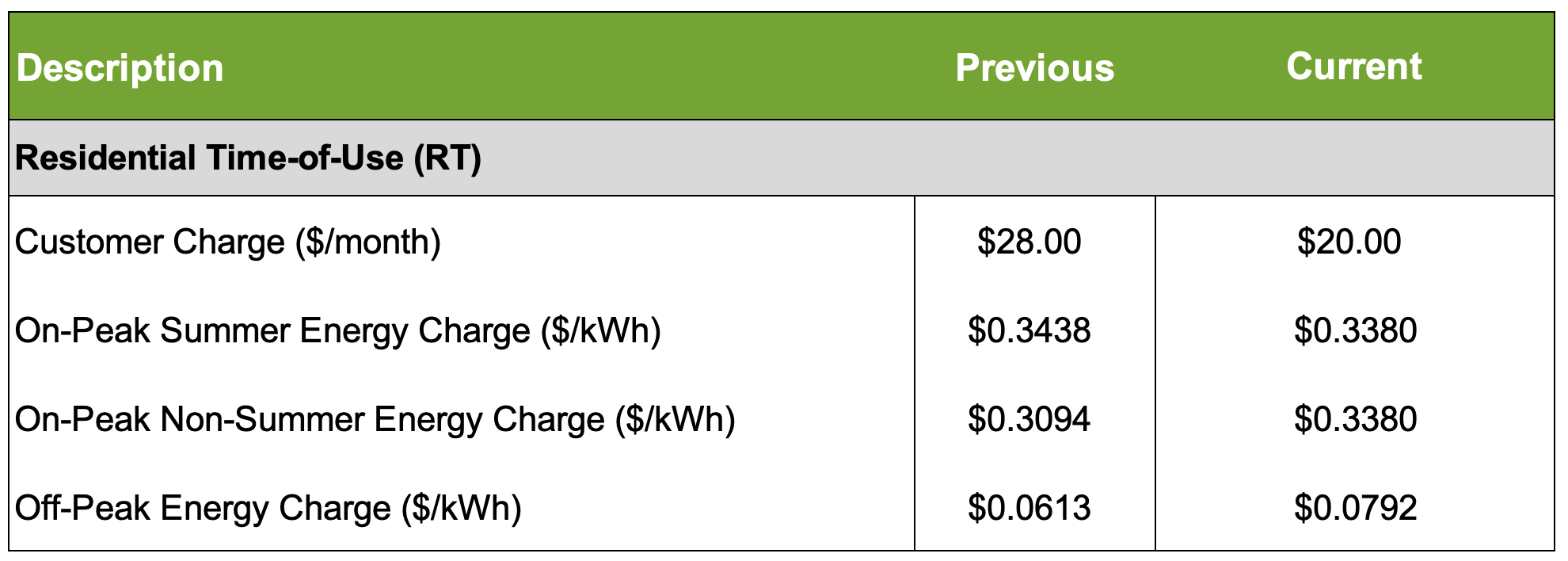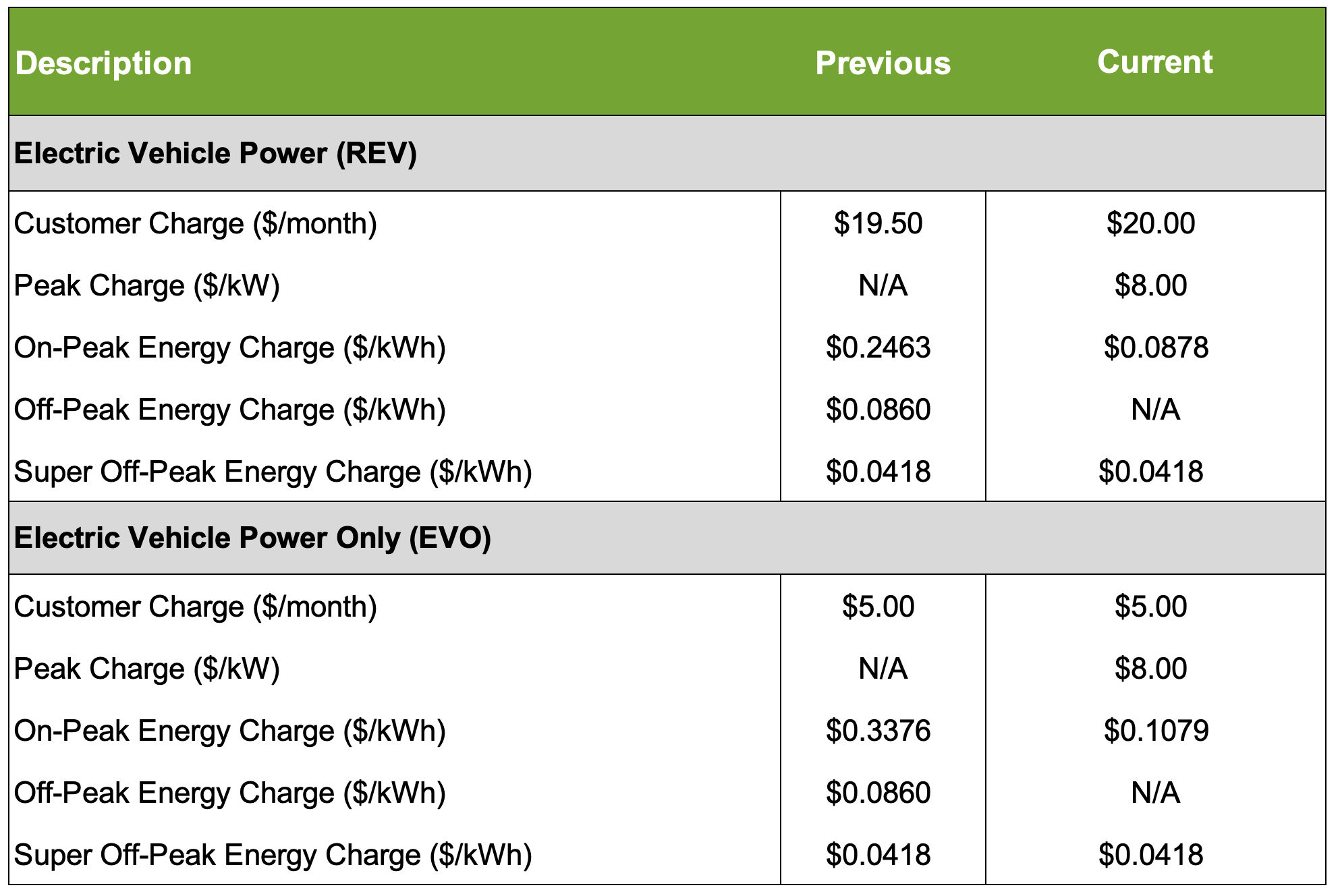Residential Customers
Santee Cooper's new rates include a base rate increase for its residential customer class and a new, three-part rate structure that gives residential customers on the RG rate the power to dramatically lower their bills by adjusting when they use high-demand appliances. The new rates took effect with bills rendered on and after April 1, 2025.

- 3 p.m. to 6 p.m. in summer months (April-October).
- 6 a.m. to 9 a.m. in winter months (November-March).
*This new rate structure affects residential customers on the following rates: RG (Residential General Service, covering most residential customers), REV (Residential Electric Vehicle) and EVO (Residential Electric Vehicle Only).
RG Customers
Under the new rates, the typical residential customer may see an average $10.72 monthly bill increase. However, by shifting the use of appliances that require a lot of electricity away from Peak Hours, a residential customer could use the same amount of energy and receive a lower bill.
An overview of the new rates is available here.
RG Rate Comparison

Under previous rates, a typical residential customer was billed according to how much electricity in kilowatt hours (kWh) they use each month (energy charge) and the cost to serve the customer account (customer charge).
The new rate structure:
- Reduces the Energy Charge by approximately 34% to $0.0792 per kWh, as modified.
- Slightly increases the Customer Charge from $19.50 to $20 per month.
- Adds an $8.00-per-kilowatt (kW) Peak Hour (demand) charge, which customers will see on their bills as Peak Charge. This charge covers fixed system costs, including generating stations.
The Peak Charge is applied to the highest demand recorded in one hour by the customer during Peak Hours for each billing cycle. By shifting high-use appliances to the 21 hours a day that are not Peak Hours, a residential customer could use the same amount of energy and receive a lower bill.
Calculate How the Rate Adjustment Could Impact Your Bill
Residential customers on the RG rate can see how the rate adjustment may affect your bill based on your past energy use and get ideas for how you can reduce your bill by changing when you use the most electricity.
Understanding Demand and Peak Charge
The Peak Charge is assessed based on Santee Cooper’s typical system peak, which is a defined three-hour window when customers typically require the most electricity to meet their needs. In other words, that's when demand peaks. These peaks occur in the late afternoon/early evening on a hot summer day or in the early morning on a cold winter day.
Peaks happen when people want the most from their heating or cooling systems and are the most active in their homes – adjusting thermostats for maximum comfort, doing laundry, and running any number of other large electric appliances.
The Peak Charge is applied to the highest demand recorded in one hour by the customer during Peak Hours for each billing cycle.


Defeat The Peak and Bank The Savings
Shifting and delaying your appliances that use a lot of electricity really does make a difference.
Reduce your electric bill by delaying the dishwasher until after peak hours, running the thermostat and water heater before and after peak hours, using the clothes dryer during the 21 hours outside of peak hours - or using just one appliance at a time.
It’s easy to Defeat The Peak and Bank The Savings.
Learn MoreRT Customers (Time-of-Use Rate)
RT Rate Comparison

Residential customers who do not want to be billed under the RG rate can switch to the residential time-of-use rate, which includes daily periods when the energy charge is higher and daily periods when the energy charge is lower. The on-peak periods for the RT rate coincide with RG Peak Hours and are from 6 a.m. to 9 a.m. in the winter months and 3 p.m. to 6 p.m. in the summer months. Additionally, the customer charge has been reduced by $8 per month, and there is no demand charge.
EV Customers
The experimental REV and EVO electric vehicle rates were made permanent and include an on-peak demand charge, which you'll see as Peak Charge on your bill. The Super Off-Peak charging windows will remain 11 p.m. to 5 a.m. on the REV rate and 9 p.m. to 5 a.m. on the EVO rate.
EV Rate Comparison

What is a Three-Part Rate Structure?
A three-part rate is new for most residential customers. This rate structure divides billed amounts between the customer charge, the energy charge, and – new – a peak (or demand) charge.
Here's the three-part rate breakdown:
- Customer Charge (flat rate): The Customer Charge is a fixed charge unrelated to energy usage. It covers ongoing fixed charges, such as billing, accounting, collections and customer service, as well as some fixed installation and upkeep costs for things including meters, wires and transformers.
- Energy Charge (kWh): The Energy Charge covers the amount of electricity used during a billing period and variable costs of producing electricity, including purchased power and a base amount for fuel. It’s calculated by multiplying the total energy used by the per-kWh charge for the billing cycle. The energy charge will vary if you use more or less electricity.
- Peak Charge (kW): Demand is measured in kilowatts (kW) and represents the maximum amount of electricity you used over a single hour during the peak hours each billing cycle. The Peak Charge is determined by multiplying the maximum demand you incurred by the demand rate. The Peak Charge is applied to the highest demand recorded in one hour by the customer during Peak Hours for each billing cycle.